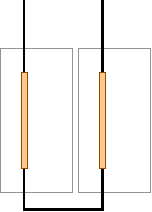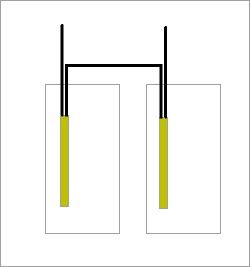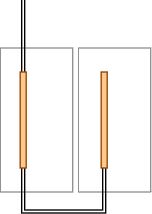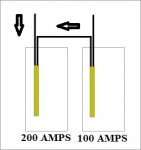kraftymike
Member
- Location
- Montana
I have a 400 amp main breaker that protects two feed through (400 amp bus rated ea.) panels A and A1 that sit side by side.
My question is:
Would it be permissible by code to run 400 amps parallel to these panels in the form of two pipes each containing a single set of 250 kcmil cu. "Pipe 1" feeds panel A and "Pipe 2" feeds panel A1 with a set of 250 kcmil jumpering the two panels together. Essentially creating a loop.
I don't believe I have ever seen this and I am guessing there must be a reason.
My question is:
Would it be permissible by code to run 400 amps parallel to these panels in the form of two pipes each containing a single set of 250 kcmil cu. "Pipe 1" feeds panel A and "Pipe 2" feeds panel A1 with a set of 250 kcmil jumpering the two panels together. Essentially creating a loop.
I don't believe I have ever seen this and I am guessing there must be a reason.




